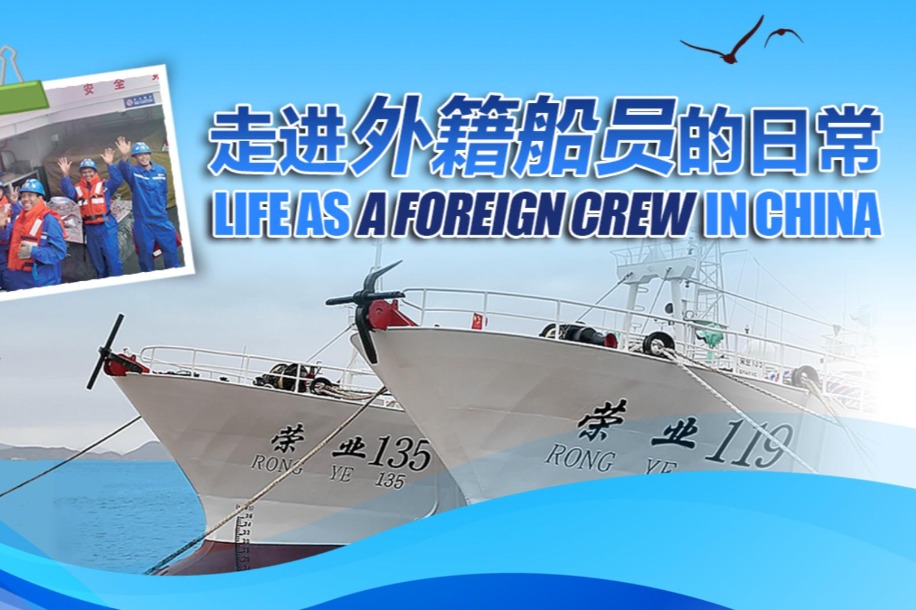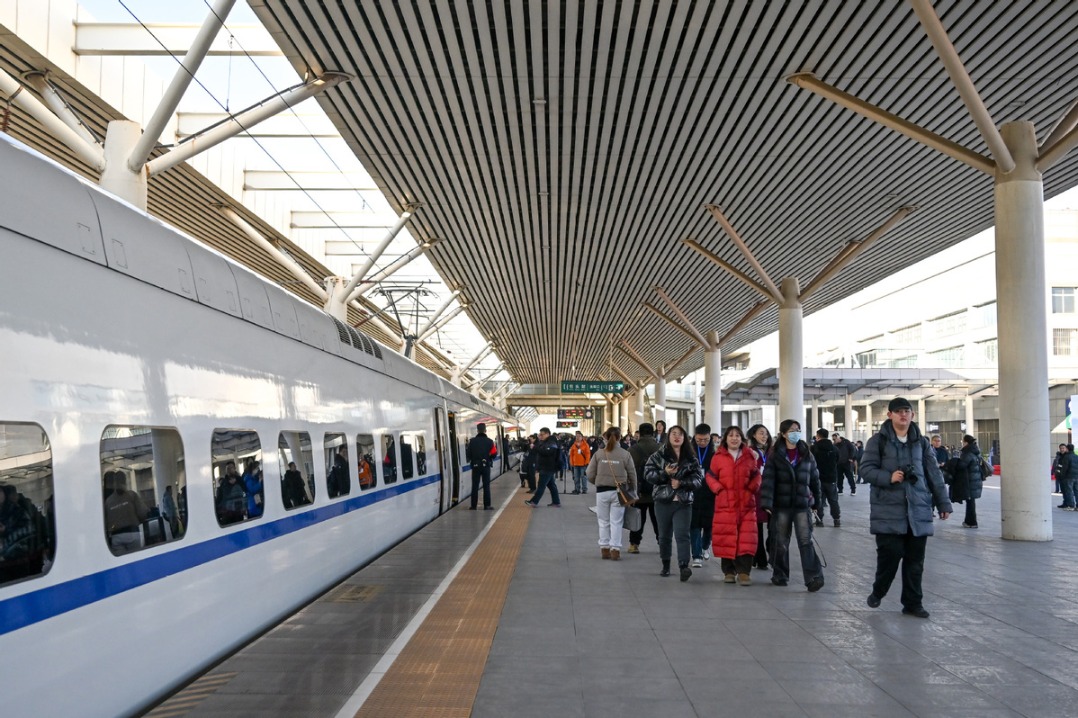Crucible of fortitude


RCEP enhances integration of the signatory states in both regional and global value chains amid the tariff tumult
Never has the significance of multilateral free trade been more pronounced and relevant than today when the global trading system is openly under attack following the imposition of the United States' "reciprocal tariffs", which is virtually unilateral in nature. It sent shock waves of uncertainty across the world, notably the export-led economies in Southeast Asia which are running bilateral trade with the US on trade surpluses.
Among the member states of the Association of Southeast Asian Nations, Cambodia, Laos and Myanmar have been slapped with extraordinarily high tariffs of 49 percent, 48 percent and 44 percent, respectively, while Malaysia, one of the first included in the derogatory "Dirty 15" list by the US administration, is not spared from the heavy brunt of 24 percent "reciprocal tariff", although the modality of tariff computation remains largely unknown to the receiving end.
To counter the rising trend of de-globalization and mitigate the negative impact, regional cooperation remains an effective solution. In this context, the Regional Comprehensive Economic Partnership framework remains a turf to be tested amid the current volatility given that its collective potential is yet to be fully unleashed.
The inauguration of the RCEP marked enhanced integration of the signatory states in both regional and global value chains. In addition, it provides a platform for the least-developed economies in the region to embark in the pursuit of common prosperity through economic integration as the RCEP has never been intended to be an exclusive "rich countries club".
Of the 15 RCEP signatory states, the China-ASEAN partnership is indisputably the bedrock of the entire RCEP architecture. The evolving ASEAN-China Free Trade Area (ACFTA) has been progressing steadily since 2010 and the latest upgrade to version 3.0 was recently concluded under the rotating chairmanship of Malaysia.
Meanwhile, the inclusion of emerging sectors of digital economy and green transformation is all set to bring the ACFTA 3.0 to a new phase of higher-quality China-ASEAN partnership beyond mere tariffs.
As the ASEAN population is becoming increasingly digital tech-savvy and digitization is getting into all major aspects of life, ranging from e-commerce, e-hailing, travel arrangements to e-payment, the booming of digital economy is very much anticipated in ASEAN with an enormous estimate of market potential worth $1 trillion by 2030. In this respect, China, with its prowess in the digital economy, will make a perfect partner for ASEAN to meet the ever-growing digital demand of the region's 670 million people.
In the case of green transformation, the Southeast Asian countries are well aware that if the climatic exigencies are left totally unchecked, the regional GDP is likely to be driven down by 11 percent by 2100. High-risk flood prone areas in countries such as Indonesia, Malaysia, Myanmar, Thailand and Vietnam would likely bear the heavy brunt of the consequences, with a displacement of 87 million people.
Conversely, the current dire need for climatic intervention has created a huge market in Southeast Asia for the green shift — ranging from renewable energy to electric vehicle and EV batteries and the like, alongside attracting $3.7 trillion to $6.7 trillion in green investment and unlocking between 49 million and 66 million additional jobs for the whole of ASEAN.
The rising significance of new economic drivers in the digital economy, green transformation and e-commerce is now on the cards of ACFTA 3.0. This sets a good platform for the other RCEP signatory countries such as Japan, the Republic of Korea, Australia and New Zealand to integrate with. Nonetheless, seamless integration is not without challenges, notably in terms of uneven level of digital maturity and harmonizing of legal frameworks related to cross-border data protection, cybersecurity and environment governance.
In building the RCEP into a high-level and the largest free trade area that is consistent with the contemporary needs of globalized multilateral cooperation, intra-RCEP technical cooperation and capacity building intended to empower the least-developed signatory countries need to be given due priority. This is particularly so in keeping the latter abreast with the contemporary regulatory benchmarks related to digital trade cooperation and sustainability at the core of regional economic governance, alongside addressing concerns such as cybersecurity, digital divide and cross-border data exchange protection.
As the RCEP is progressing steadily amid rising protectionism, it is necessary to raise the level of cognitive understanding of the RCEP rules across the ASEAN member states where weak capacity and low stakeholders' awareness of RCEP provisions truly impede user-friendly utilization.
Although self-certification of the product origin is permitted to widely use the provision of Rules of Origin, burdensome origin certification procedures continue to deter exporters from fully utilizing RCEP preferences, thus defeating the very purpose of self-certification.
Alongside this, what appears more pressing for RCEP to address lies in "tariff liberalization", which needs to be expedited by shortening the phasing-out periods and minimizing the exclusion list. Certain agricultural products and automotive goods that are placed under lengthy phase-out schedules or full exclusions will invariably reduce the RCEP's value proposition compared to the existing FTAs.
While the RCEP's regional "trade liberalization" is still evolving, the US administration's coercive tariffs came as a severe blow threatening to undermine the rules-based framework of free trade. Most of the ASEAN member states are badly hit and are denied the opportunities of collective negotiation under the auspices of ASEAN, thus putting the ASEAN centrality to test.
Being the brainchild of ASEAN, RCEP is very much guided by the principle of ASEAN centrality, which also helps shape the future of the China-ASEAN partnership amid the Sino-US geopolitical competition.
Knowing that the tariff bargain looks set to be leveraged to suppress the robust trade between China and the respective ASEAN member states, the bloc has been navigating the "reciprocal tariff" test cautiously with a non-confrontational approach.
From the perspective of ASEAN, the options are rather limited. The bloc is well aware that its refrain of staying above the Sino-US face-off is no bargaining chip in the negotiation with the US. Neither is any trade-off with Washington at the expense of Beijing's interests a sensible option for ASEAN as it will inevitably risk derailing the enduring relations with China that has been benefiting the region enormously. In the final analysis, the only viable bet left available to ASEAN is to stay united with the rest of the world in defence of the WTO-centric rules-based global trading system.
In this regard, the RCEP is no doubt the key flagship of ASEAN that must be kept on course with full commitment and at all cost.
The author is president of the Belt and Road Initiative Caucus for Asia Pacific. The author contributed this article to China Watch, a think tank powered by China Daily. The views do not necessarily reflect those of China Daily.
Contact the editor at editor@chinawatch.cn.

































